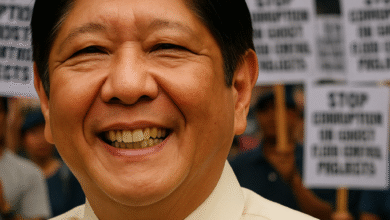
Flood Control Projects: Timeline of Anomalies
An ongoing investigation has uncovered irregularities in Philippines flood control projects. Authorities are examining hundreds of contracts that may have been paid but never completed or were poorly executed. Against this backdrop, let us trace the timeline of these projects from their early implementation to the peak of irregularities and the current state of monitoring.
Where It All Began
Between 2018 and 2022, the DPWH implemented tens of thousands of flood control projects nationwide, including river improvements, drainage systems, and local waterways. Early audits noted some irregularities, such as incomplete documentation, delayed completion, and minor cost discrepancies. However, most projects complied with regulations and helped reduce flooding in local communities. District engineers conducted routine inspections, and the department actively validated project implementation. During this period, most projects were smaller in scale, and the issues did not attract widespread attention.
Peak of Irregularities
The situation changed sharply in 2023 and 2024, when audits revealed the highest levels of irregularities. Senate interpellations led by former Senate President Francis Escudero showed that out of 30,000 projects implemented since 2018, authorities had validated 8,000 and identified 421 as suspected ghost projects. Senate Finance Committee Chairman Sherwin Gatchalian confirmed that most issues occurred during this two-year window.
Problems included fully funded projects that were never built and constructions that were substandard or incomplete. Some ghost projects appeared in official records but had no physical implementation on site. Experts said weak monitoring, poor accountability among engineers, and gaps in internal audits allowed these irregularities to persist. The findings echoed warnings from Senate President Pro Tempore Panfilo Lacson, who urged stricter oversight to prevent mismanaged projects from leaving communities vulnerable to flooding.
Ongoing Monitoring
Authorities have continued inspecting flood control projects into 2025 and 2026. DPWH Secretary Dizon reshuffled district engineers to strengthen oversight and instructed that all projects undergo inspections before and during execution. The department also launched a transparency portal allowing citizens to monitor the status of projects and report irregularities directly to authorities.
Unimplemented projects underwent recosting, resulting in cost reductions of up to 50 percent depending on region, materials, and logistical challenges. According to Gatchalian, this process provided the agency an opportunity to allocate funds more efficiently and address project delays while ensuring that future projects meet standards.
By 2026, the National Expenditure Program removed approximately 255 billion pesos in flood control projects from the DPWH budget. Verified projects retained their funding, with an obligation rate of 76 percent and a disbursement rate of 49 percent. Officials emphasized that ongoing inspections and citizen participation aim to ensure that public funds are used efficiently and projects achieve their intended purpose.
READ: Cebu Floods: When Greed Becomes a Killer
Communities in flood-prone areas continue to watch the DPWH closely. Delays or mismanaged projects directly affect residents’ safety and livelihoods. Local officials have expressed cautious optimism that stricter inspections and citizen reporting will prevent ghost projects. For many households, successful Philippines flood control projects could determine whether they remain resilient or suffer disaster in the next typhoon season.




